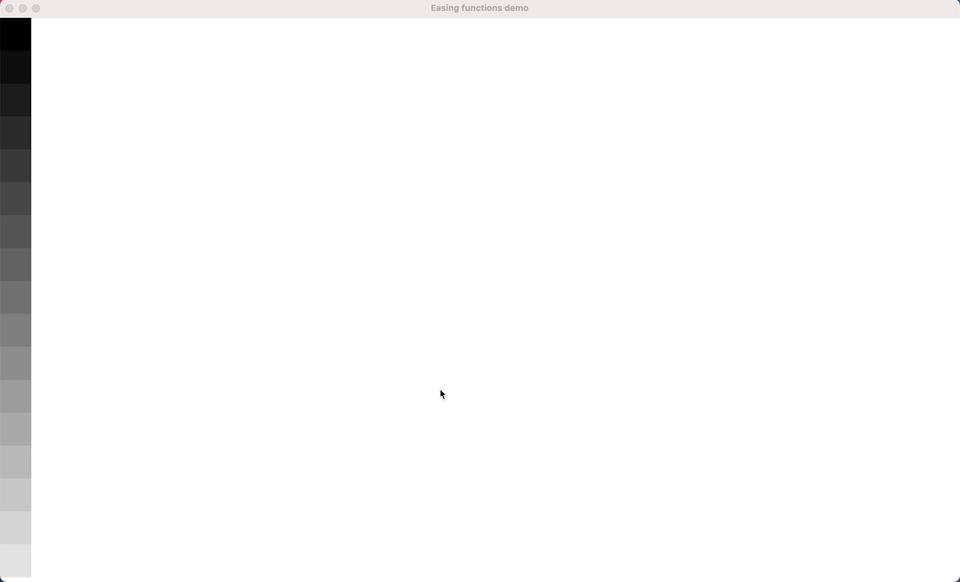rust-animation 

rust-animation is an OpenGL based graphics library for creating hardware-accelerated user interfaces written in Rust. It allows us to implement a simple animated UI for embedded devices.
Note: this project is in early development stage so there would be a lot of changes without any notice.
Installation
rust-animation is written in Rust so you need to install Rust:
If you build rust-animation in Windows, you have to install cmake first.
Note: rust-animation is tested in Ubuntu 20.04, Windows10, and Mac OSX.
There are several examples so you can build them as follows:
$ cargo build --example ani
$ cargo build --example picture_viewer
$ cargo build --example easing_functions
Run
$ target/debug/examples/ani
$ target/debug/examples/picture_viewer
$ target/debug/examples/easing_functions
Code examples
use rust_animation::play::Play;
use rust_animation::stage::Stage;
use rust_animation::actor::Actor;
use rust_animation::actor::EasingFunction;
...
let mut play = Play::new("Animation test".to_string());
play.initialize();
let mut stage = Stage::new("stage".to_string(), 1920, 1080, None);
stage.set_visible(true);
let mut actor = Actor::new("actor_1".to_string(), 400, 225, None);
actor.x = 100;
actor.y = 100;
actor.set_image("examples/splash.png".to_string());
// 1X -> 2X for 5 sec.
let time = 5.0;
actor.apply_scale_animation(1.0, 2.0, time, EasingFunction::Linear);
actor.apply_translation_x_animation(100, 1000, time, EasingFunction::EaseInOut);
actor.apply_translation_y_animation(100, 300, time, EasingFunction::EaseInOut);
actor.apply_rotation_animation(0, 360, time, EasingFunction::EaseInOut);
let mut actor_2 = Play::new_actor("actor_2".to_string(), 120, 120, None);
actor_2.x = 100;
actor_2.y = 100;
actor_2.scale_x = 1.5;
actor_2.scale_y = 1.5;
actor_2.set_color(0.0, 0.0, 1.0);
// 0 degree -> 360 degree for 5 sec
actor_2.apply_rotation_animation(0, 360, 5.0, EasingFunction::EaseInOut);
stage.add_actor(actor);
stage.add_actor(actor_2);
play.add_stage(stage);
The main loop of glfw:
while !window.should_close() {
// events
process_events(&mut window, &events);
play.render();
// glfw: swap buffers and poll IO events (keys pressed/released, mouse moved etc.)
window.swap_buffers();
glfw.poll_events();
}